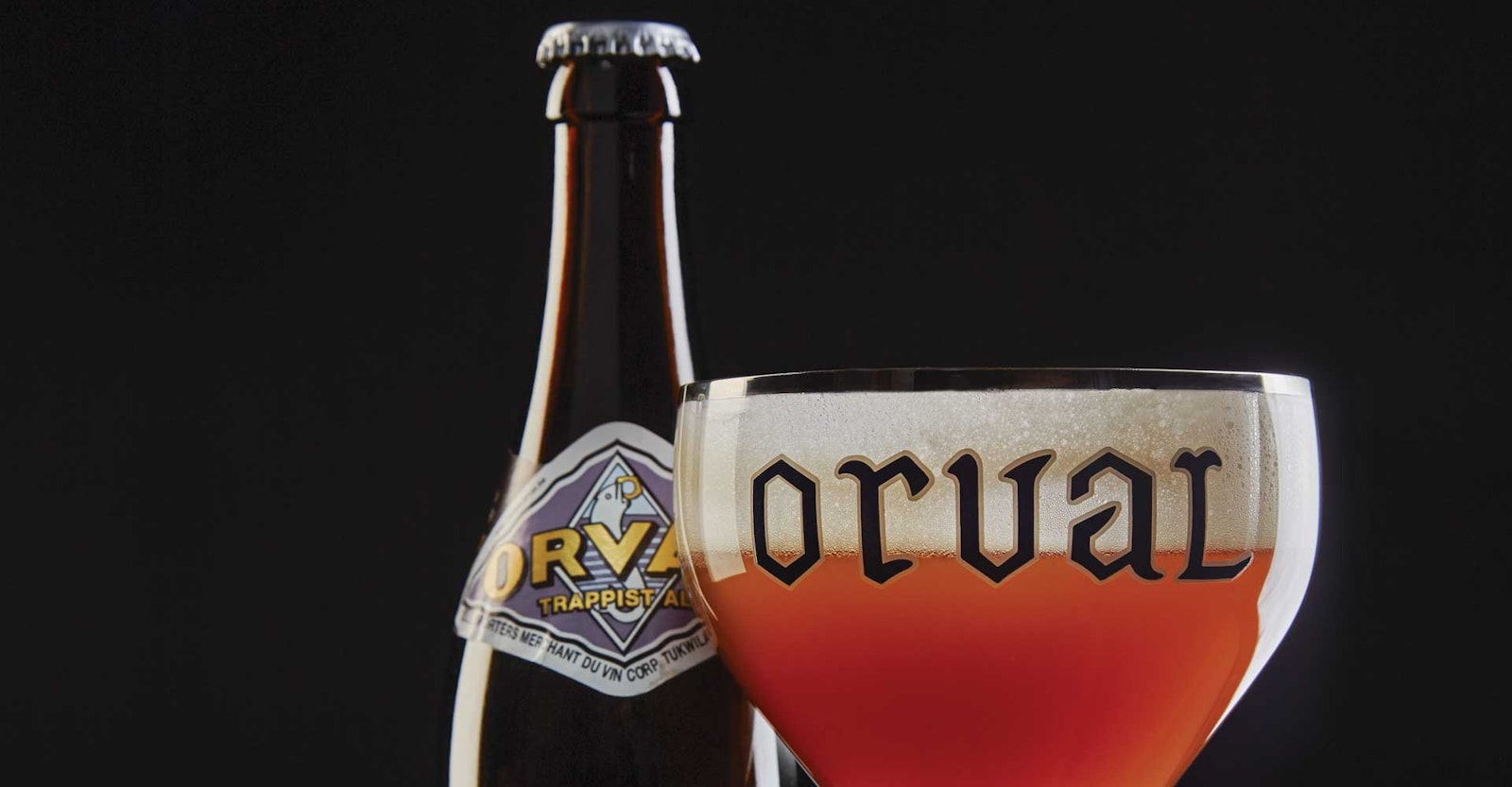There may be no beer or brewery more respected by brewers around the world than Orval. The singular focus of these Trappist monks and the depth and character of the beer they produce is (arguably) unmatched. Here, we’ve asked brewers to share their thoughts about why this beer means so much to so many.
“You drive through the woods in Belgium, and suddenly there’s this beautiful monastery,” says Steven Pauwels, the brewmaster at Boulevard Brewing Company in Kansas City. The Belgian-born brewer is talking about Brasserie d’Orval, a Trappist brewery inside of the enchanting Abbaye Notre-Dame d’Orval in the country’s Gaume region.
The brewery’s Orval ale is brewed with springwater, 2-row spring barley, and liquid candy sugar. It is top fermented and dry hopped before undergoing further fermentation with Brettanomyces in the bottle. It’s the only beer that the monastery brews, which many brewers say gives it strength in its simplicity.
“I think Orval is the whole package,” Pauwels continues. “It’s highly drinkable and very unique, and it’s a Trappist beer, which makes it unique in itself. And how the beer changes as it ages—that’s one-of-a-kind. I haven’t found a similar beer.”
That’s saying a lot—Pauwels got his start in craft beer young, working summers at his hometown brewery where his father worked, Eeklo’s Brouwerij Krüger. He went on to hold positions at the Domus brewpub in Louvain and at RIVA brewery in Dentergem before becoming the brewmaster at Boulevard.
Pauwels, along with many other craft brewers, deeply appreciates the way that the Brettanomyces in Orval changes the aroma and flavor of the beer over time. “When you have it fresh from the brewery, it tastes like a dry-hopped English ale. When the Brett kicks in—that’s when it becomes so interesting,” he says. “First those phenols come out; they keep aging and they come to a bunch of new flavors. Orval has these interesting tropical fruit notes that come out from Brett at about six months or so of aging. After a year, this beer’s flavor is pure Brett.”
Jesse Friedman, the cofounder and brewmaster at Almanac Beer Co. in San Francisco echoes Pauwels’ sentiments about Orval’s evolution. “I love how Orval changes and evolves in the bottle,” he says. “It’s a perfect showcase for how beer is alive. When it’s fresh at the brewery, it’s surprisingly hoppy, with a minty and spicy noble hops aroma. Then as it sits in the bottle, the bottle-conditioning Brett yeast takes over, drying out the beer completely and adding an evolving horse blanket and almost tropical note of pineapple.”
“Orval has a magical depth to it,” adds Ben Coli, the brewmaster at the Belgian-focused Dageraad Brewing in Vancouver, British Columbia. “It’s amazingly complex, and the beer has its seasons as it ages. As it gets older, the dry hopping becomes less and less prominent, and the Brettanomyces character grows and develops. A six-month-old bottle is an entirely different beast from a twelve-month-old bottle. And it’s different again after two years. If you have a real taste for horse blanket, [it’s] incredible after three years.”
The Brettanomyces in Orval is by far the aspect of the beer that most craft brewers talk about. “Of course, every lambic brewery relies heavily on Brettanomyces because those beers are spontaneously fermented, and Brett just happens to be part of the mix,” Coli says. “Orval, as far as I know, was the first brewery to deliberately pitch Brett, which was traditionally thought of as a wine-spoiler, if it was thought of at all.”
For Michael Kane of Kane Brewing Company in New Jersey, another Belgian-centric brewery, Orval represents his first exposure to Brettanomyces. “I love how the flavor changes over time and each bottle is a little different depending on freshness,” he says. “I admire their focus on process and how they take the necessary time to create these beautiful beers from fermentation through bottling.”
Sean Burke of Commons Brewery in Portland, Oregon, also focuses on Belgian-style beers (French and German-style, too) and was greatly influenced by Orval in his early beer-drinking days. “Orval is such a wonderful platform for Brettanomyces and really showcases it without having anything else get in the way,” he says. “One of the things that made it so unique was that there was nothing else like it out there. It didn’t fit anywhere stylistically and didn’t need to.”
For Matthew Brynildson, the brewmaster at Firestone Walker Brewing Company, Orval stands as one of greatest achievements in the brewing world. “It is an incredibly complex beer of modest alcoholic strength, with excellent balance and beautiful drinkability,” he says. “Although the beer is made in an abbey and could be considered old school, the brewers there employ a number of ‘advanced’ modern techniques to create the beer’s depth of flavor and incredible shelf stability. Modern technology couples with whole-cone dry hopping and Brett yeast. Recently retired Orval Brewmaster Jean-Marie Rock is one of my absolute idols, and this beer is his masterpiece.”
When Brewers Drink Orval
“I like Orval at about six months when those tropical flavors are the most present.” — Steven Pauwels, Boulevard Brewing Co.
“I love about a year-old bottle of Orval. The hops are still there, but there’s this big dark berry nose to it, and the Brett funk is really starting to come through.” — Ben Coli, Dageraad Brewing
“I am a traditionalist; I like to see beers rooted in history. I really enjoy an Orval that has been conditioned in the bottle for a few or more years.” — Kevin Ely, Uinta Brewing Co.
“At every stage in its evolution it’s interesting and complex, and at every stage it’s delicious.” — Jesse Friedman, Almanac Beer Co.
PHOTO: MATT GRAVES

